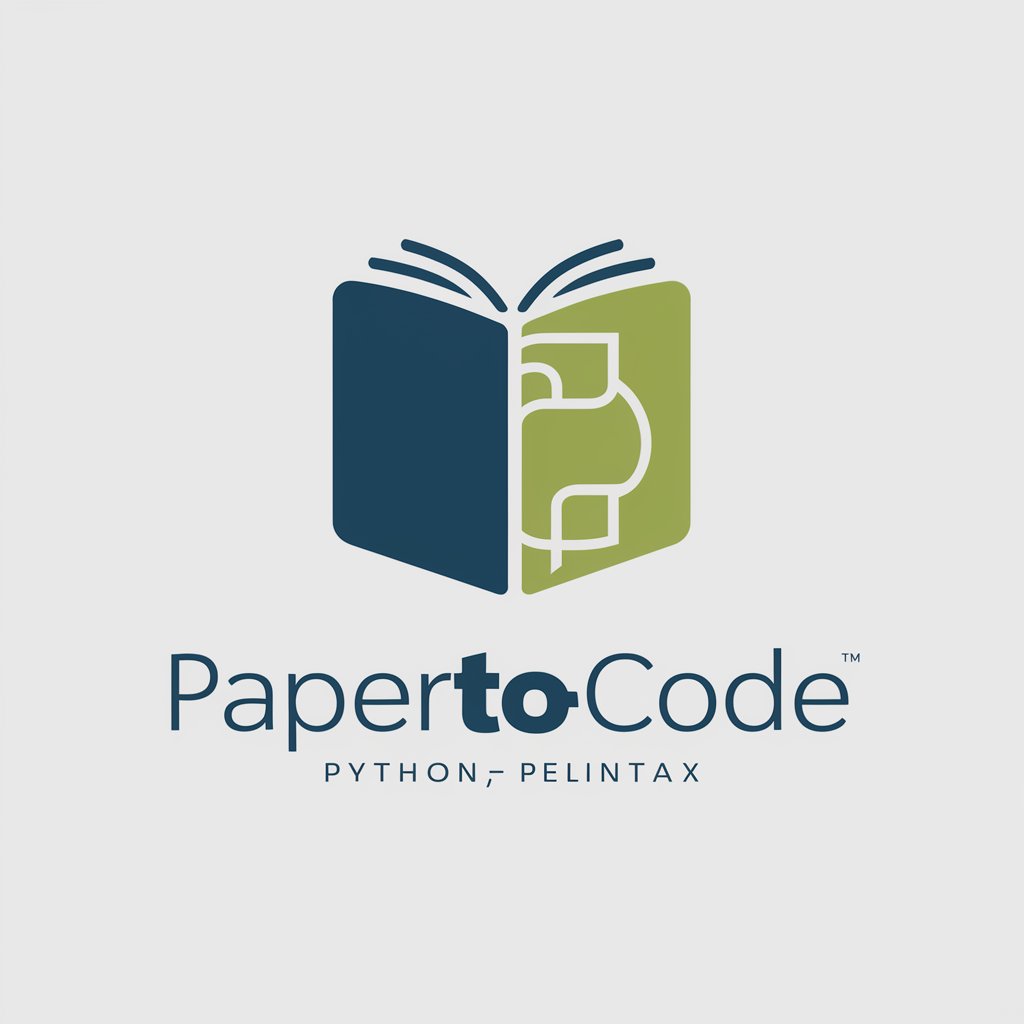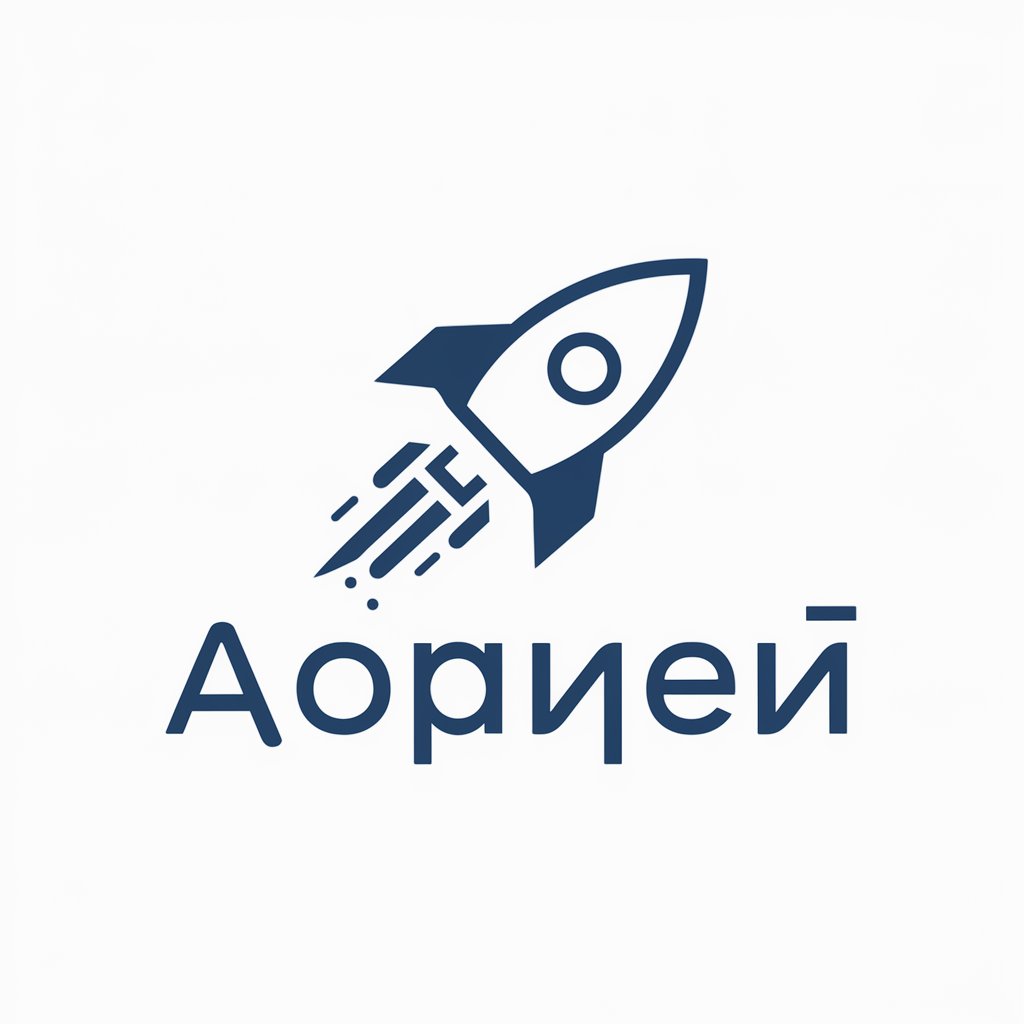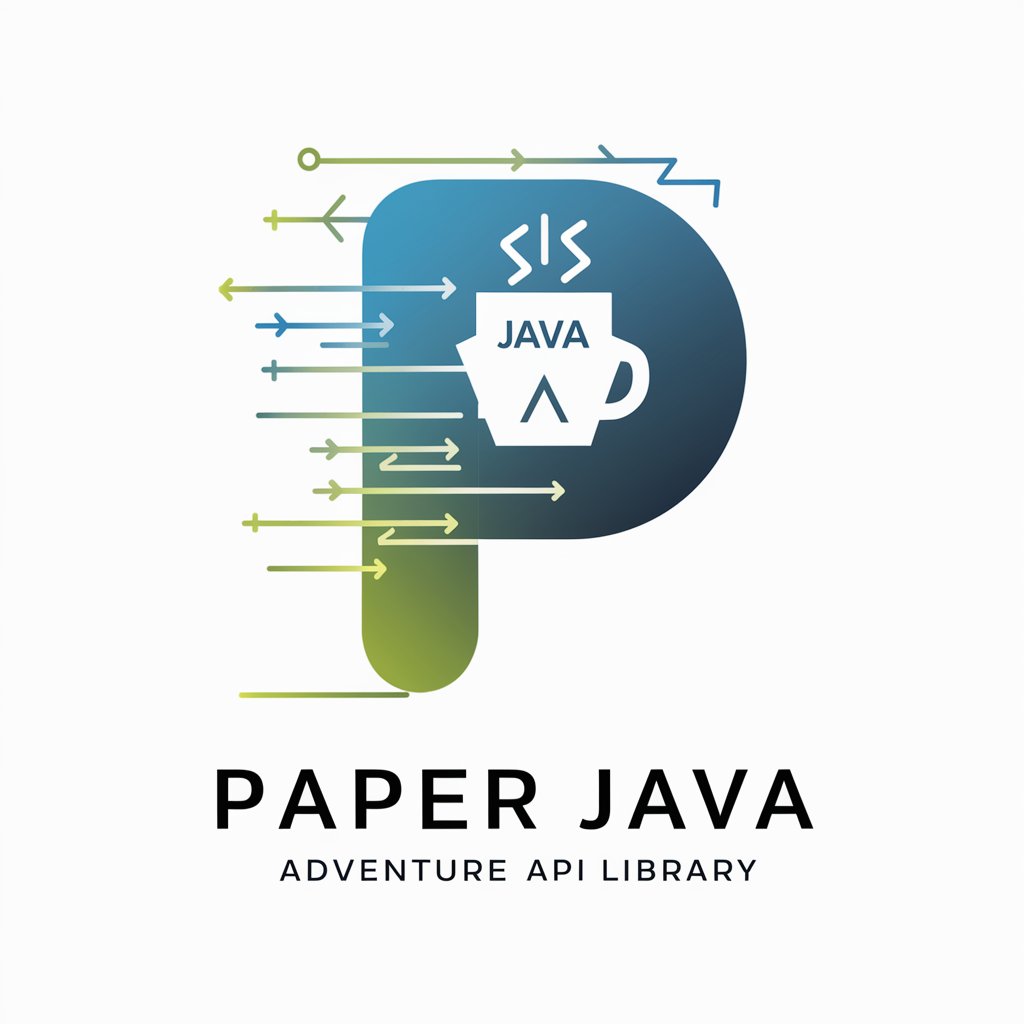
PapertoCode - Code Conversion for Research

Welcome to PapertoCode, where research meets execution.
Turning research into runnable code.
Create a sleek and modern logo for an AI tool named 'PapertoCode' that...
Design a logo that represents an AI tool specializing in converting research papers into...
Generate a logo for 'PapertoCode', focusing on elements of technology, programming, and research...
Craft a logo for an AI tool that transforms research methodologies into executable Python code, with a design that...
Get Embed Code
Introduction to PapertoCode
PapertoCode is a specialized AI tool designed to facilitate the direct translation of research paper methodologies into executable Python code. The core purpose of PapertoCode is to streamline the process of implementing cutting-edge research findings for developers and researchers. This is achieved by analyzing the implementation sections of research papers, extracting key methodologies, and converting these into ready-to-use Python code. For example, if a paper describes a novel machine learning model for image classification, including data preprocessing steps, model architecture, training procedures, and evaluation metrics, PapertoCode will provide the Python code for each of these components, using appropriate libraries like TensorFlow or PyTorch. This enables users to quickly move from theoretical understanding to practical application. Powered by ChatGPT-4o。

Main Functions Offered by PapertoCode
Methodology Translation
Example
Translating the methodology of a deep learning paper into a TensorFlow model.
Scenario
A developer wants to implement a novel neural network architecture described in a paper for a computer vision task. PapertoCode reads the paper's methodology section, then provides the TensorFlow code that constructs the model layer by layer.
Data Preprocessing Code Generation
Example
Generating code for data normalization and augmentation techniques.
Scenario
A researcher is working on a dataset with images of varying sizes and needs to normalize and augment data as described in a recent paper. PapertoCode generates Python code to automate these preprocessing steps, matching the specifications outlined in the paper.
Training Procedure Implementation
Example
Creating Python scripts for custom training loops, including loss functions and optimization algorithms.
Scenario
An AI enthusiast is experimenting with a new optimization algorithm for training deep learning models, as introduced in a research paper. PapertoCode provides the Python code necessary to implement this training procedure, including the integration of the new optimizer.
Evaluation Metrics and Testing
Example
Implementing code for computing advanced evaluation metrics as per research specifications.
Scenario
A data scientist needs to evaluate a model's performance using specific metrics that are not readily available in standard libraries. PapertoCode translates the paper's evaluation methodology into Python code, enabling precise performance measurement.
Ideal Users of PapertoCode Services
Research Scientists and Academics
This group benefits from PapertoCode by rapidly prototyping and testing theoretical models and hypotheses. It saves significant time and resources, enabling them to focus on innovation rather than implementation details.
Software Developers and Engineers
Developers working on integrating the latest AI and machine learning advancements into applications will find PapertoCode invaluable. It allows them to quickly translate research into practical code, speeding up the development cycle.
AI Enthusiasts and Hobbyists
Individuals passionate about AI and machine learning, who may not have a deep background in these fields, can use PapertoCode to experiment with and learn from the latest research without being bogged down by complex implementation challenges.
Industry Professionals
Professionals in industries such as healthcare, finance, and automotive, looking to leverage AI for innovation, can use PapertoCode to implement state-of-the-art research findings directly into their workflows, enhancing productivity and competitive advantage.

How to Use PapertoCode
Start Your Journey
Initiate your coding journey by visiting yeschat.ai, offering a free trial without the need for login or ChatGPT Plus.
Upload Your Paper
Provide the research paper or a detailed description of its methodology. Ensure the implementation details are clear for optimal code conversion.
Specify Requirements
Clearly indicate any specific libraries, frameworks, or programming language versions you prefer or require for your project.
Review Generated Code
Examine the Python code generated from the paper's methodology. Make note of any customizations or further explanations you might need.
Iterate and Customize
Feel free to request adjustments or ask for clarification on the generated code to ensure it meets your project's needs.
Try other advanced and practical GPTs
ゴールくん
Empowering Your Goals with AI

Zen Marketer
AI-powered social media content crafting for yoga teachers

Healthy Menu Buddy
Simplify healthy eating with AI

新年の抱負メーカー
Craft your aspirations with AI

New Years Resolutions Assistant GPT
Empowering your resolutions with AI guidance

Strategic Positioning GPT Advisor
Empower Your Market Positioning with AI

Network Flow Analyst
Empowering network insights with AI

ジャンルの達人
Unlock knowledge across genres with AI-powered precision.

cosdent introdution generator
Crafting Engaging Dental Introductions with AI

tomorrowstories
Navigating Tomorrow's Trends Today

Naval AI
Empowering insights with AI-powered Naval wisdom

CQFD Bot
Streamlining French Homologation Research

Frequently Asked Questions about PapertoCode
What types of research papers can PapertoCode convert into code?
PapertoCode specializes in converting research papers focused on computational fields such as data science, machine learning, and computer vision into executable Python code.
How accurate is the code generated by PapertoCode?
The accuracy depends on the clarity of the implementation details provided in the paper. PapertoCode strives for high fidelity in translating methodologies into code, but user review is recommended.
Can PapertoCode handle papers in languages other than English?
Currently, PapertoCode primarily processes papers in English due to the prevalent use of English in scientific research documentation. Papers in other languages may require prior translation.
Is there any support for debugging the code generated by PapertoCode?
While PapertoCode ensures the code is syntactically correct, debugging and further customization based on project-specific needs are the responsibility of the user.
How does PapertoCode deal with papers that use proprietary or uncommon algorithms?
PapertoCode will attempt to provide the most accurate representation of the algorithms using standard programming practices and available libraries. If an algorithm is proprietary, suggestions for alternatives or generic implementations may be provided.





